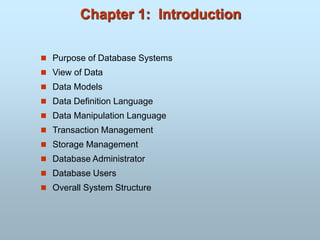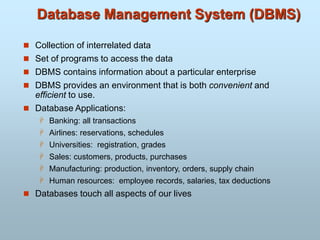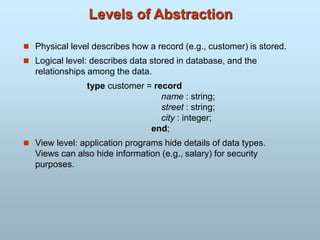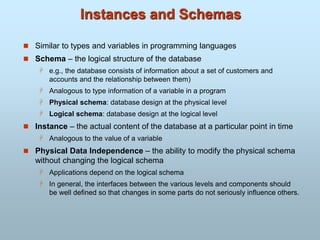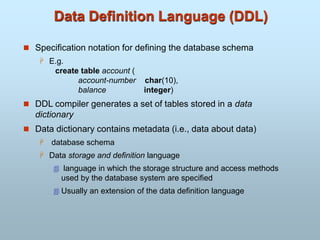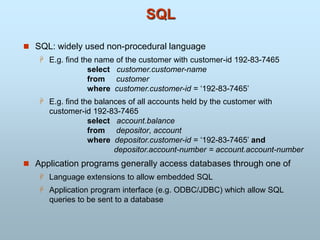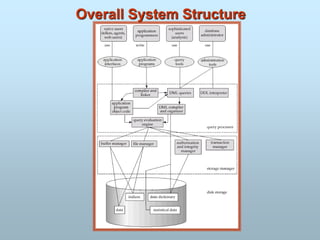The document provides an overview of key concepts in database management systems including:
- DBMS allows for convenient and efficient data storage and access while avoiding problems with file systems like data redundancy and inconsistency.
- Data is represented at multiple levels of abstraction from physical storage to logical relationships to application views.
- Popular data models include the entity-relationship model and relational model which use schemas to define data.
- Languages like SQL are used for data manipulation while DDL defines the database schema.
